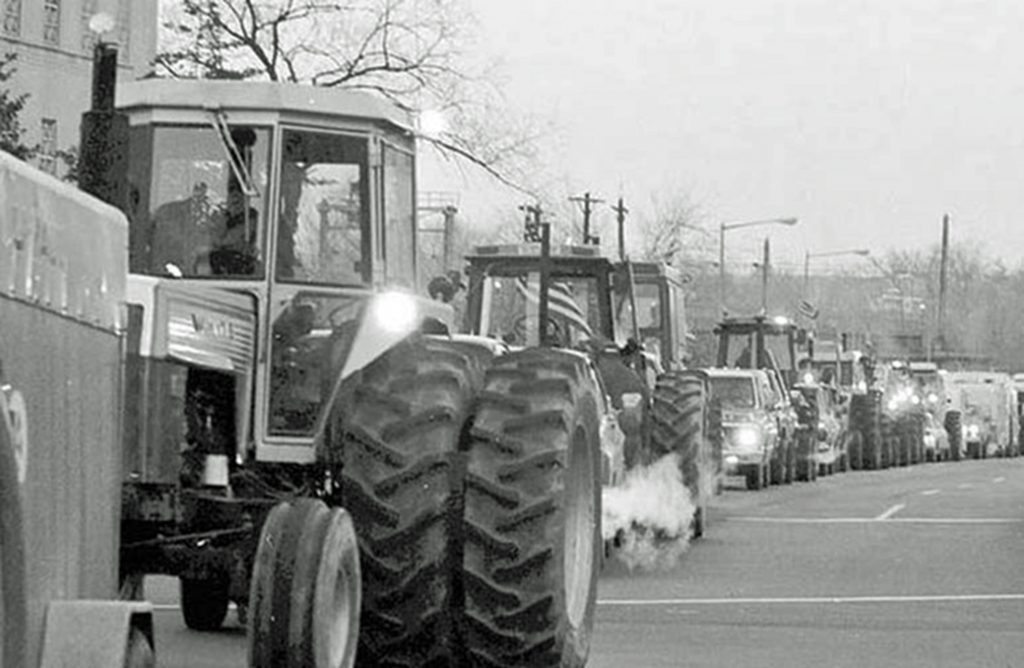Rising interest rates are piling further burdens on working farmers, whose debts are reaching record levels this year. At the same time, sharpening competition and increased production have forced net farm income down by half since 2013 — to an estimated 12-year low.
Small family farms — which account for 90 percent of all U.S. farms — are fighting to survive under conditions of continuing downward pressure on crop and livestock prices, while costs for fertilizer, seed and machinery continue to rise.
The vast majority of family farmers depend on off-farm jobs to keep going. They are held hostage to agricultural monopolies that control the markets and dictate the terms for input prices and what they get paid for their production.
The Federal Reserve June 13 boosted interest rates for the second time this year. The Fed also announced that two more raises can be expected in 2018. Loans are crucial for farmers, who borrow to get what they need to plant, feed livestock and operate during growing season, hoping to cover the loans — and interest — and make some net income when they sell what they’ve raised.
Interest rates on farm loans reached a five-year high of 5.6 percent in the fourth quarter last year.
“We’ve been able to survive because of cheap money,” Jason Barnes, a cattle and grain farmer in South Dakota, told the press in April. “You raise rates high enough, it will have a huge impact on people’s ability to continue farming.”
Banks also increase collateral requirements for loans, making it more expensive and risky for farmers to borrow.
“My wife is a third generation farmer, her family has been here for 119 years,” Larry Bailey of Brainard, Nebraska, told the Militant by phone June 23. “She has a side business, our daughter lives here but works off the farm, and also runs a bee production.”
Bailey says they’re lucky to still have the farm, but doubts there will be a fourth generation working the land. They’ve had to scale down to survive and today farm 7 acres, one-tenth of what they used to.
“We’ve decided to limit to apples, grapes, tomatoes, sweet corn and peppers. We’re trying to get a firmer commitment to sell what we grow,” he said. “Last year wholesalers told us to plant all this pepper. Then they didn’t want to buy it at the price we needed. And if you don’t say yes to them, you have no market.”
Giant food monopolies — Archer Daniels Midland, Bunge, Cargill and Dreyfus — control 75 percent of global grain trade. They’ve pushed for farmers to boost production in their drive to expand exports and compete on the world market. This has led to overproduction and plummeting prices. The downward pressure also affects dairy products and cattle. At the same time production costs have soared.
“As I see it, it’s a battle to stop corporate America from getting control over food production,” Bailey said. “But we’re pretty much at their mercy. The Koch brothers own all the fertilizers, Monsanto all the plant material. They dictate the terms.”
Loans, debts threaten bankruptcies
There were 6.8 million farms in the U.S. in 1935, compared to some 2 million today. And the median farm size is double what it was in the 1980s. With rising acreage and production, farmers have to take out larger loans to cover added costs. More than 70 percent of farm loans are now over $100,000. Some are up to $1 million with interest payments as high as $60,000 a year.
“I’m not sure where this is going, there is no mechanism for slowing down overproduction,” Vern Jantzen, who farms 300 acres of corn and soybeans, said by phone from Plymouth, Nebraska. “It’s all supply and demand. And if you have perishables you can’t just wait a week or a month, you’d rather dump the price and get at least something for them.”
In addition to farming, Jantzen drives a truck and a school bus. Everyone he knows has at least one job off the farm.
“Some around here have been shut off by the banks, some have downsized, others have somehow found a way to survive,” he said. “We don’t talk about it. If you don’t make it, both you and fellow farmers think it’s your failure. You’re on your own.”
Farm Aid said that the country is “on the cusp of the biggest wave of U.S. farm foreclosures since the 1980s,” when thousands of farmers drove their tractors to Washington, protesting outside Congress and the Federal Reserve.
“We haven’t seen any bankruptcies or foreclosures around here yet,” Jantzen said. “But I’m with a National Farmers Union hotline where farmers can call in and talk. The number of calls has definitely increased. A lot of people are under pressure.”
The suicide rate among farmers is now the highest of any profession in the country, the Center for Disease Control and Prevention reports.


